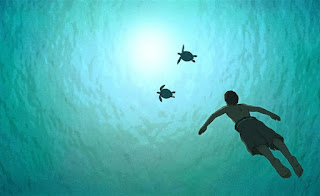Oscar-Nominated Film The Red Turtle Has No Dialogue - For director Michael Dudok De Wit, seeing his film The Red Turtle get nominated for an Oscar for animated feature was a shock.
“The competition was really strong,” he said from his home in London. “I knew our film had a chance. It was unlike any of the other films. But many other films had a huge chance, I think. I was honestly quite nervous!
“On top of that, another French film was nominated, My Life As A Zucchini, also handmade like our film. Kubo And The Two Strings was mostly handmade as well. I’m just delighted with all the nominees and of course, for our film and my team.”
The Red Turtle is a dialogue-less film that follows a castaway on a deserted tropical island populated by turtles, crabs and birds.
How did the project first come together, from such disparate cultural backgrounds and influences?
It’s a miracle. It was a very unlikely cooperation. (Studio Ghibli co-founder/Red Turtle artistic director) Isao Takahata has a mind that is interested in European culture, and I love Japanese art and traditional art especially.
We were from totally opposite parts of the world and we each had an openness and a curiosity about each other’s culture.
What was behind the choice to tell this story without dialogue?
The whole thing started with an invitation from Studio Ghibli saying, “If you want to make your first feature film, we are interested in making it.”
It was a total dream offer – it was so surreal. I’ve seen and admired all of their films, and on top of that they are very independent-minded. My reply was, ‘Yes, of course!’
In the beginning I had some dialogue in my script, just a few moments to feel closeness to the main characters.
We experimented with that but … at some point in development, we dropped all the dialogue.
But I felt strongly that it should feel as though the people in the film can talk, and they do – it’s just that in our film we don’t see them talk. We wanted it to be very natural.
What does it say about the academy and the animation community that such a diverse spectrum of animated films were nominated this year?
It’s striking: On one hand, the members have voted for some very solid quality computer-animated films which have a traditional approach to the story.
And on the other hand, they chose two films from Europe that were handmade, made on a small budget, and a film from Oregon with puppet animation which was beautifully, beautifully made.
In other words, they clearly had a very open attitude.
Some films are more experimental than others, but they all have a place among the nominations.


0 comments:
Post a Comment